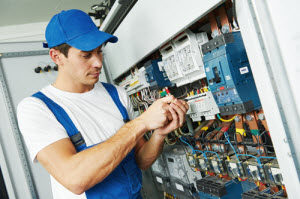Far from a fad, green building and green design have entered the mainstream. What was once a novelty for designers and architects has now become a staple in the industry. Some of what’s helped to make green buildings so popular is their ability to solve some of the most common construction problems, especially those having to do with energy and water consumption.
In this post, we take a close look at the types of construction problems that can be solved by building green.
Energy Loss through Heating & Cooling Systems
One of the most common construction problems has to do with wasted energy. Architects and contractors are tasked with creating a facility that can optimize energy use. This can be especially difficult with heating and cooling units when doors are frequently opened, letting in outside air. Windows can also be a source of energy loss, allowing air to seep in through cracks or gaps.
To help the HVAC system run more efficiently, you can use energy-efficient windows, which lock in air and block outside air from entering. You can also create a double door entrance to prevent outdoor air temperatures from affecting the indoor climate control system.
This method uses one door that leads from outside into a small room. This climate-controlled room has another door that leads into the rest of the building. This prevents untreated air from rushing into the building or treated air from rushing out every time the door is opened.
Would you like more information about making your building more green friendly? Download our FREE eBook Sustainable Building Products: How to Make Your Facility Eco-Friendly from Top to Bottom.This free guide will teach you about using recyclable materials, reducing harmful emissions, and much more.
High Water Consumption in Restrooms
Water consumption is another primary concern when creating a new building, especially if you’re responsible for the building’s future operational costs. Bathrooms are notorious for consuming high volumes of water. Using green building design, you can help to reduce the amount of water used.
This can be achieved by installing low-flow toilets or urinals, which use no more than 1.6 gallons of water with every flush. Similarly, low-flow faucets in the restroom can help to minimize water waste when guests are washing their hands without reducing the effectiveness of the sink itself.
Wasted Energy in Unoccupied Spaces
Facilities waste large amounts of energy (and revenue to pay for that energy) due to lighting unoccupied areas. An easy solution for this common construction problem is to install motion-activated lighting that’s on a timer. This is perfect for buildings that have areas staffed 24 hours as well as areas that are only occupied for part of the day.
These automatic lights replace traditional switches, so there’s no risk of someone accidentally leaving the lights on in an unused area, and it ensures that the lights are only running when needed.



